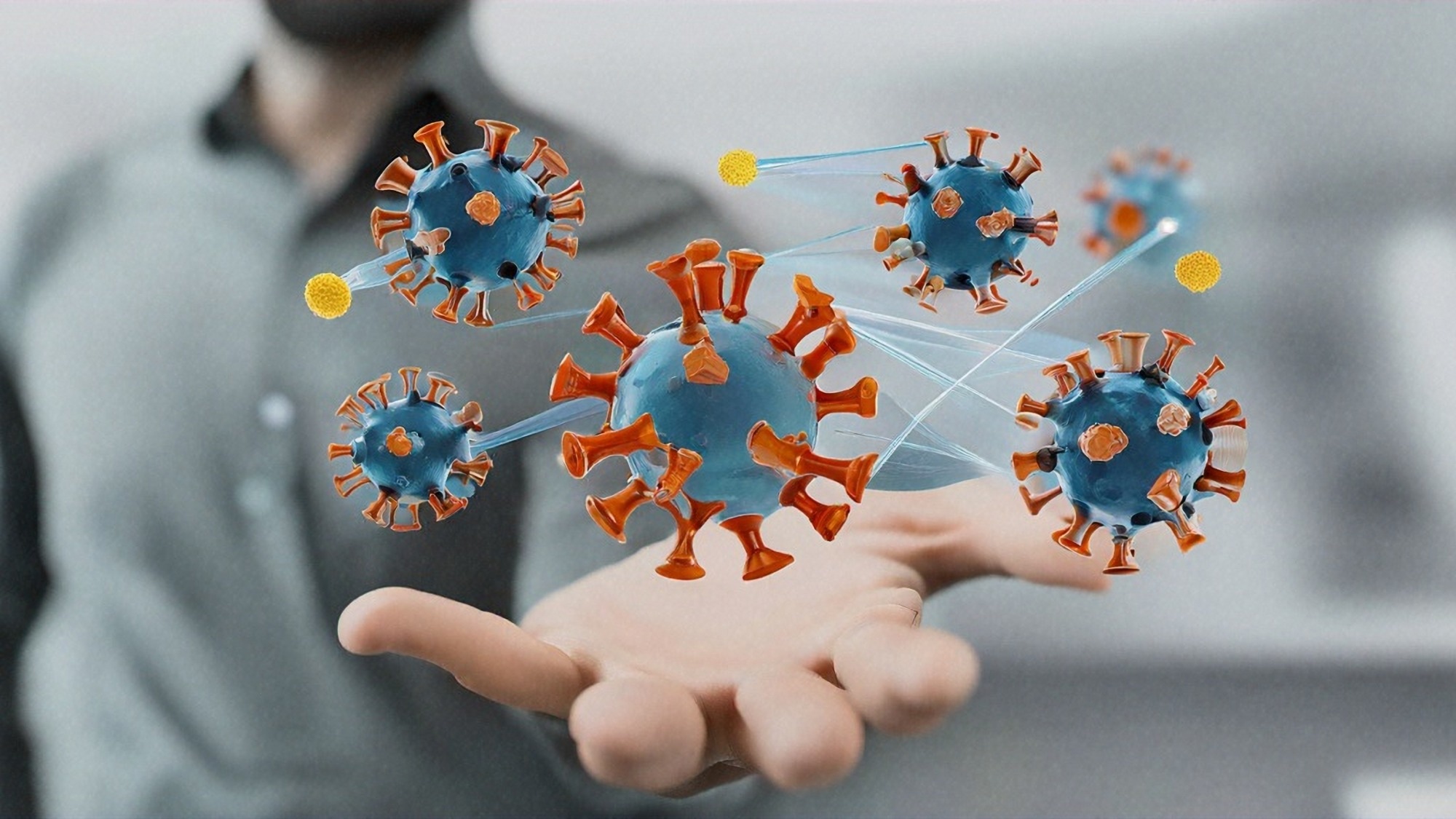Harnessing AI agents and human expertise, researchers accelerate the design of innovative nanobodies to combat evolving SARS-CoV-2 variants.
Study: The Virtual Lab: AI Agents Design New SARS-CoV-2 Nanobodies with Experimental Validation. Image Credit: Shutterstock AI

 *Important notice: bioRxiv publishes preliminary scientific reports that are not peer-reviewed and, therefore, should not be regarded as conclusive, guide clinical practice/health-related behavior, or treated as established information.
*Important notice: bioRxiv publishes preliminary scientific reports that are not peer-reviewed and, therefore, should not be regarded as conclusive, guide clinical practice/health-related behavior, or treated as established information.
In a recent preprint posted to the bioRxiv preprint* server, researchers at Stanford University and the Chan Zuckerberg Biohub created a “Virtual Lab,” a research collaboration of artificial intelligence and humans, to design nanobody binders targeting the variants of severe acute respiratory syndrome coronavirus 2 (SARS-CoV-2) using a computational pipeline.
They found that Virtual Lab could successfully design 92 new nanobodies, with two showing improved binding to recent SARS-CoV-2 variants, specifically the JN.1 and KP.3 variants, serving as promising candidates for further investigation.
Background
Interdisciplinary science research requires collaboration among experts from diverse fields, but coordinating large teams can be challenging, particularly for under-resourced groups.
Large language models (LLMs) like ChatGPT and Claude have gained popularity for assisting researchers in various tasks, such as answering scientific questions, summarizing papers, and writing code.
Although LLMs show great potential for specific tasks, they have not been widely tested in complex, open-ended research that spans multiple disciplines.
Existing frameworks like ChemCrow and Coscientist focus on specific areas like chemistry and synthesis planning, while AI Scientist attempts to cover the full research process but remains limited to narrow machine learning applications.
These efforts often lack real-world validation and don’t address the challenges of interdisciplinary research that require multi-step reasoning across fields, making it difficult for under-resourced groups to engage in advanced scientific discovery.
In the present study, researchers introduced a novel framework, “Virtual Lab,” an AI-human collaboration developed to tackle complex interdisciplinary problems and used it to design novel nanobodies targeting the latest SARS-CoV-2 variants.
About the Study
The Virtual Lab consists of a combination of team and individual meetings, where the human researcher sets the agenda, and LLM agents (e.g., biologists, machine learning specialists) contribute specialized knowledge to achieve the research goals.
The research is guided by a Principal Investigator (PI) agent, who selects appropriate scientist agents, defines their roles, and directs the overall process.
In team meetings, all agents discuss broad research topics, and their input is synthesized by the PI to guide decision-making. For more specific tasks, individual meetings are held with a single agent, often assisted by a Scientific Critic agent to provide feedback.
The agents, each defined by a title, expertise, goal, and role, collaborate to address complex research questions in a structured way, with multiple rounds of discussion if necessary.
An example of the Virtual Lab in action is its application to nanobody design for combating the SARS-CoV-2 virus.
The PI agent assembles a team (e.g., immunologist, machine learning specialist) to specify the project’s direction, select computational tools (e.g., ESM, AlphaFold-Multimer, Rosetta), and implement these tools to design nanobodies.
These tools help optimize nanobody sequences through various processes, such as log-likelihood analysis, structural prediction, and binding energy calculations.
Each step is implemented via individual meetings with relevant agents, followed by a merge meeting to ensure high-quality results.
Results and Discussion
The Virtual Lab conducted a detailed computational workflow to design improved nanobody candidates targeting the KP.3 variant of SARS-CoV-2.
The workflow involved several rounds of mutation and analysis for four starting nanobodies: Ty1, H11-D4, Nb21, and VHH-72. Each round refined the nanobodies by introducing mutations guided by specific scoring metrics such as ESM log-likelihood ratio (LLR), AlphaFold interface confidence (ipLDDT), and Rosetta binding energy (dG).
These metrics helped identify top mutant sequences, which were then validated experimentally.
The process began by assessing the wild-type nanobody and then iteratively introduced point mutations, applying computational tools to predict improved structural binding.
After four rounds, the best sequences, based on the combined weighted score (WS), were selected for experimental validation.
The results showed that the mutation process consistently improved the quality of the nanobodies in terms of binding affinity and structural stability.
Experimental validation of the 92 selected mutant nanobodies showed that 38% exhibited high expression levels in E. coli, with 85% showing improved binding to the Wuhan receptor-binding domain (RBD) protein.
Notably, two new mutants demonstrated binding to additional variants, such as JN.1 and KP.3 RBD, attributed to specific mutations like R37Q and L59E, which likely enhanced electrostatic interactions and hydrogen bonding.
The Virtual Lab’s workflow involved minimal human input, with the majority of work generated by the LLM agents. The agents collaborated in interdisciplinary teams, with the PI agent guiding the overall process.
Parallel meetings and input from a Scientific Critic enhanced the quality of the output, demonstrating the power of this collaborative approach for rapid and robust scientific discovery, accelerating complex projects like nanobody design.
Conclusion
In conclusion, although constrained by outdated LLM training data, imperfect tools, and prompt engineering challenges, the Virtual Lab showcases a groundbreaking approach to interdisciplinary research by seamlessly integrating AI agents with human expertise, enabling faster, more efficient scientific discovery.
Researchers have stated that as LLMs evolve, the framework’s effectiveness in driving interdisciplinary research is expected to improve further, potentially expanding to applications beyond biological research.
This is wild and futuristic. A virtual lab comprised of multiple (5) #AI agents designed potent nanobodies vs #SARSCoV2 with minimal human oversight. @james_y_zou @KyleWSwanson @czbiohub @Stanford pic.twitter.com/RswSWbKUxj
— Eric Topol (@EricTopol) November 13, 2024

 *Important notice: bioRxiv publishes preliminary scientific reports that are not peer-reviewed and, therefore, should not be regarded as conclusive, guide clinical practice/health-related behavior, or treated as established information.
*Important notice: bioRxiv publishes preliminary scientific reports that are not peer-reviewed and, therefore, should not be regarded as conclusive, guide clinical practice/health-related behavior, or treated as established information.
Source link : News-Medica

